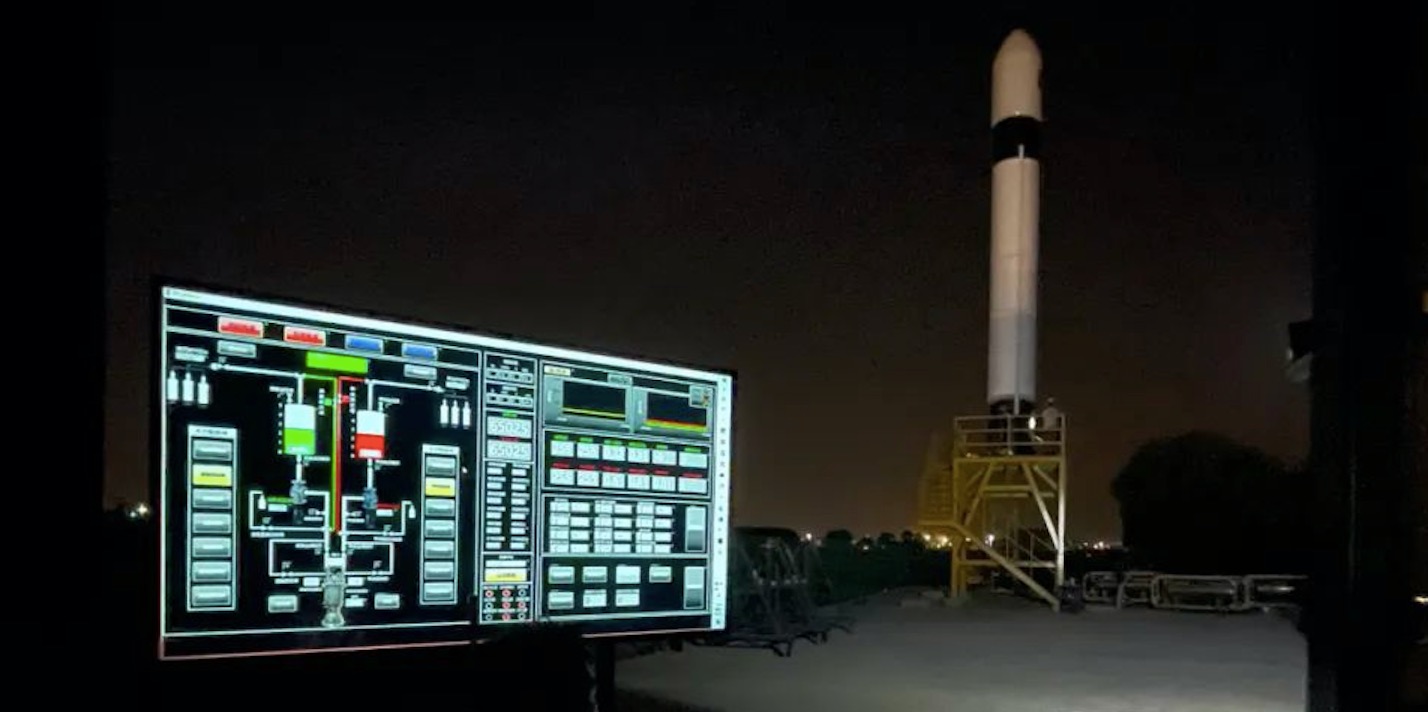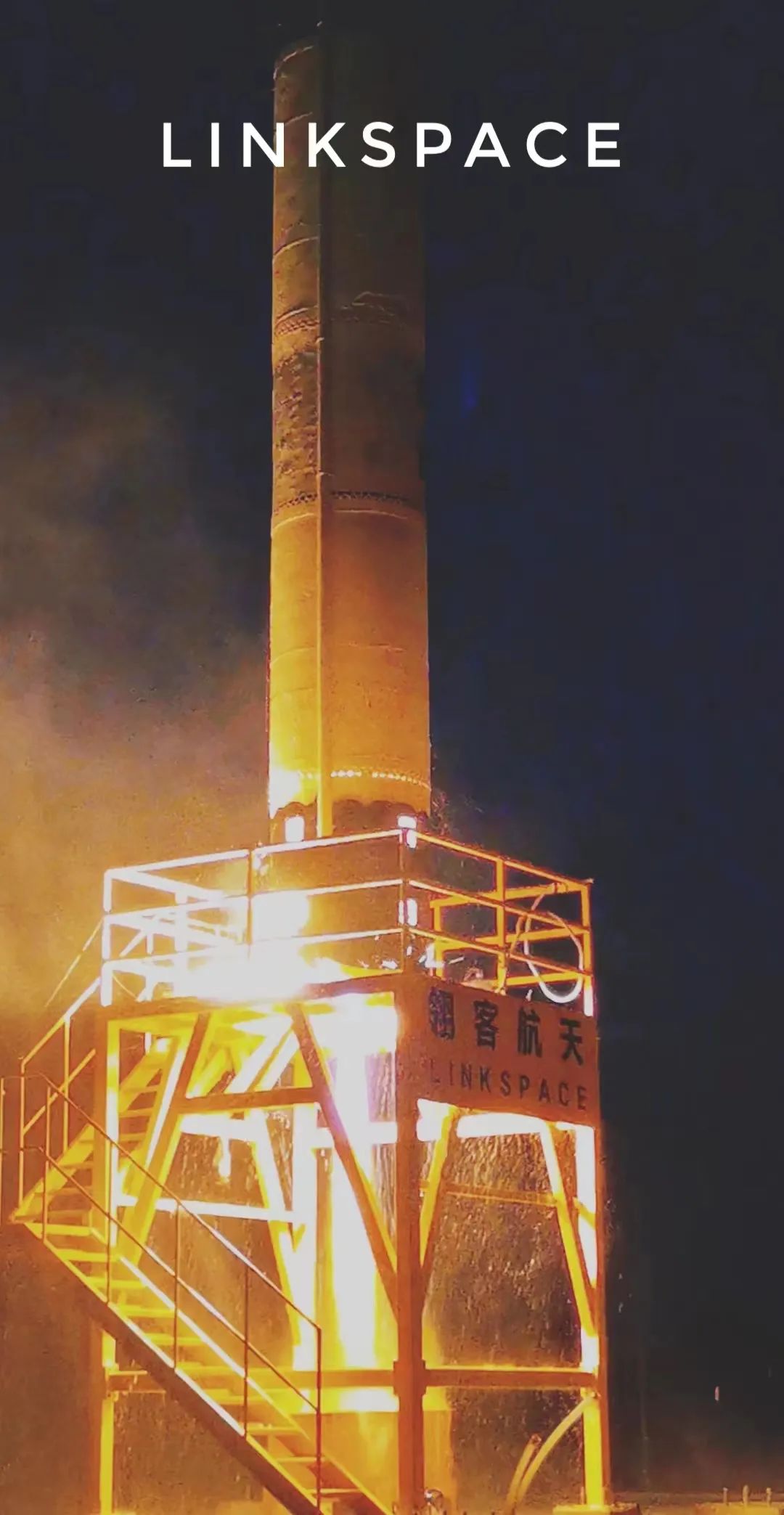LinkSpace returns: Chinese startup plans rocket launch and landing this year
LinkSpace's last major test occurred in 2019.

China's LinkSpace plans to send a rocket into space and land it safely in late 2022, three years after the startup's last major test.
The company announced Thursday (May 5) that it had carried out a static fire test of its Reusable Launch Vehicle T6 (RLV-T6) rocket using new methane-fueled engines at a site in Jiangyin, Jiangsu Province.
The rocket will later be transported to Lenghu in the northwestern Chinese province of Qinghai, the site of LinkSpace's earlier tests. The team aims to launch the 47.5-foot-tall (14.5 meters) RLV-T6 to an altitude of around 62 miles (100 kilometers) and land it safely using landing legs and grid fins, similar to the way that the first stage of SpaceX's Falcon 9 rocket touches down.
Related: The latest news about China's space program

That altitude would take the rocket to the Kármán line, one definition of the boundary between Earth's atmosphere and outer space. The flight will also involve high-altitude environment, biological and other experiments, according to a LinkSpace press release (in Chinese).
The development, and moves toward what would be the highest-altitude Chinese reusable launch and landing test to date, follow a long period of apparent inactivity for the company.
LinkSpace was founded in 2014, around the time that China's government made a major policy shift to open up its previously closed space sector to private capital.
Get the Space.com Newsletter
Breaking space news, the latest updates on rocket launches, skywatching events and more!
Inspired by the progress of SpaceX and Blue Origin in reusable rocketry, LinkSpace developed test articles for vertical takeoff, vertical landing (VTVL) tests.
The team performed two such tests in 2019 with its RLV-T5 rocket, powered by ethanol and liquid oxygen, the same propellant combination used by old German V2 rockets. The latter 2019 test soared to just over 984 feet (300 meters) and aced the landing.
But after signing a deal for new, more powerful methane-liquid oxygen engines from a fellow Chinese space startup, LinkSpace went quiet, for reasons unknown.
The reemergence began last year. LinkSpace posted a recruitment notice in March 2021, then announced in November that it had tested its own, independently developed Fengbao-1 methane-liquid oxygen engine for future suborbital launch and landing tests. A number of the same engines will power the RLV-T6 for its launch and landing attempt.
LinkSpace is not the only Chinese startup developing reusable rockets, however, meaning the company faces competition not only for reaching milestones but also for launch contracts.
Deep Blue Aerospace, founded in 2017, performed its own, successful VTVL test in October last year, reaching an altitude of 328 feet (100 m) as part of the development of the reusable Nebula 1 rocket. Higher altitude tests are planned this year.
Other Chinese private companies working on reusability include Galactic Energy, iSpace, Space Pioneer and Space Transportation. Landspace, which is preparing to launch its expendable Zhuque 2 methane-liquid oxygen powered rocket in the near future, plans to make the launcher reusable in the future, while CAS Space is working on its answer to Blue Origin's New Shepard suborbital rocket for tourism.
Reusability has caught on with China's state-owned main space contractor, too. It plans to make the Long March 8 reusable and has committed to making the first stage of its new human-rated rocket reusable.
Follow us on Twitter @Spacedotcom or on Facebook.
Join our Space Forums to keep talking space on the latest missions, night sky and more! And if you have a news tip, correction or comment, let us know at: community@space.com.

Andrew is a freelance space journalist with a focus on reporting on China's rapidly growing space sector. He began writing for Space.com in 2019 and writes for SpaceNews, IEEE Spectrum, National Geographic, Sky & Telescope, New Scientist and others. Andrew first caught the space bug when, as a youngster, he saw Voyager images of other worlds in our solar system for the first time. Away from space, Andrew enjoys trail running in the forests of Finland. You can follow him on Twitter @AJ_FI.









